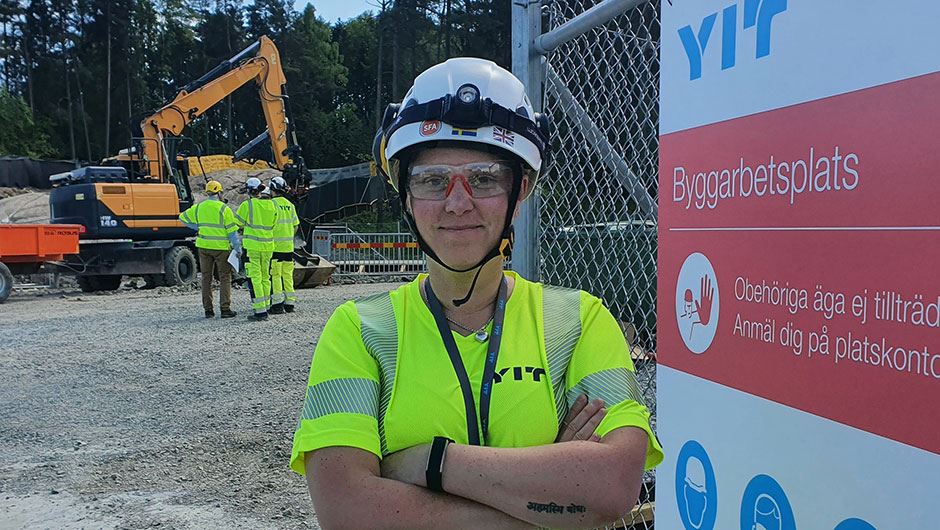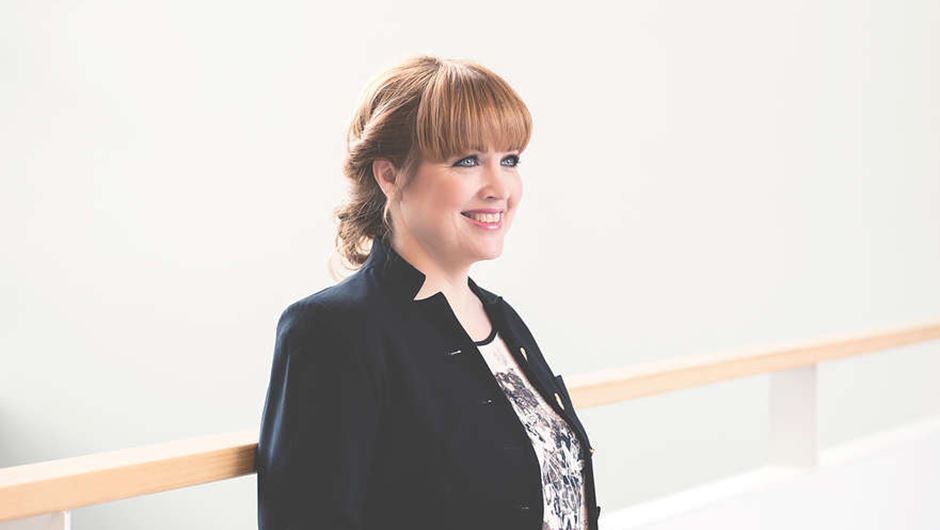Sustainable data centers as a service
- City
- Construction
- Rails, roads, bridges
- 6/16/2021
CEEQUAL – for responsible infrastructure construction
Neutral and unbiased certificates and rating systems will bring more transparency to the accountability of construction projects. In the infrastructure sector, one of the most important systems is CEEQUAL. How is it applied in the projects in practice?

Customer demands for sustainability and responsibility are growing in all industries. Investors are also more interested in responsibility issues. In the construction industry, for example, simply fulfilling the letter of the law is no longer enough for investors or other stakeholders.
“Construction companies must be able to present and implement convincing plans and actions in every area of responsibility," says Mia Ranta-aho, Head of Sustainability at YIT.
One way to increase the weight of sustainability in construction projects is through various certificates and rating systems issued by neutral and unbiased third parties, which increase the transparency of responsibility measures. In the infrastructure sector, one of the most important systems is CEEQUAL. It is an international rating system for sustainable development, which aims, among other things, to increase the comparability of different projects.
"CEEQUAL takes a wide range of aspects of responsibility into account at every stage of an infrastructure project, from strategic guidelines and planning to practical implementation and communication. It is like an external mark showing the customer that the infrastructure project is built in accordance with certain sustainability requirements. Although it has not yet fully established itself, I find it a very welcome addition. An infrastructure project needs different criteria to support its corporate responsibility work than, for example, a business premises project," says Ranta-aho.

Suitable for both metro and bridge projects
The CEEQUAL criteria are already used in several infrastructure projects in which YIT participates. For example, the Sockenplan metro project in Stockholm and The Crown Bridges project in Helsinki have applied for CEEQUAL certification.
In Stockholm, YIT is involved in constructing the southernmost part of the new metro line from Södermalm to the district of Söderort with a connection to the Hagsätra line at Sockenplan. The contract includes foundation work and the excavation of open cuts and rock tunnels. The construction began in August 2020 and will take approximately 2.5 years. The project is part of a major expansion of the Stockholm metro, with Region Stockholm expanding the metro with 11 new stations and about 22 kilometres of tunnel over the next ten years.
The project uses the CEEQUAL system, among other things, to ensure that the Region Stockholm's strategic environmental and responsibility work is integrated as seamlessly as possible into the practical planning and implementation of each subcontract of the project.
According to YIT Sweden's Environmental Manager Johanna Weckström, in such a large project, it is important to ensure that sustainability issues and goals are naturally involved in everything we do and calculate.
"Everyday decisions and measures made during the construction phase affect both the environment and people's daily lives well into the future," says Weckström.
Several measures have been planned for the construction phase of the metro project to mitigate its climate impact. These include, for example, optimising material choices and resource consumption, as well as reducing the amount of transportation required. Among other things, the measures are aimed at reducing 25% of the total CO2 emissions of the new metro during the design and construction phase.

Crown Bridges – sustainability at many levels
The Crown Bridges Alliance has also introduced the international CEEQUAL system to measure sustainability in accordance with the principles of sustainable development. The Crown Bridges project will connect the Laajasalo, Korkeasaari and Kalasatama districts to the centre of Helsinki with a 10-kilometre tramway. But how does CEEQUAL apply in the construction project in practice?
"Our responsibility statement states, for example, that our construction sites and their surroundings are safe for everyone, both employees and residents. We also want to minimise disturbances caused by the construction site for the city residents. This means both impacts on traffic as well as on air quality and noise near and around the construction site," says responsibility expert Minna Tukiainen from the Crown Bridges alliance.
In practice, the sustainability of the project is also reflected in the preparation for the future. Preparing for the potential effects of climate change, for example, by taking flood risks into account and using vegetation adapted to changing climatic conditions in green structures. Cost-efficient ways of reducing emissions to water, air and soil have been sought in the design process and the circular economy will be promoted, for example, by using recycled materials and excavation masses in construction where possible. In addition, the implementation phase must take into account that, at the same time, future sustainable land use and transport projects will not be hampered.
One of the goals of CEEQUAL that is also visible to citizens every day is to provide adequate information and ensure inclusion. Indeed, the Crown Bridges project is constantly considering how to strengthen means of interaction and civic participation.

Towards common sustainability goals
The Crown Bridges project is also special in terms of responsibility as the project is implemented under the alliance model. Mia Ranta-aho emphasises that in such a situation, all the alliance participants must be aware of the principles of the CEEQUAL framework. It is important to engage people both in common goals and to incorporate a responsible approach into their daily work.
"When everyone looks in the same direction with the same intentions, it is easier to develop common approaches. The whole project is on a more genuinely sustainable basis, as its parties do not focus on sub-optimisation but discuss how to make joint actions comprehensively more responsible. The client also can and must consider their own criteria. At the same time, the parties' awareness of responsibility issues is increasing, and it has cumulative effects on the competence and professional skills both now and in the future," Ranta-aho points out.
Sustainable development at YIT
System to measure sustainability at YIT
BREEAM is a sustainability assessment method for masterplanning projects, infrastructure and buildings. It recognises and reflects the value in higher performing assets across the built environment lifecycle through a third party certification of the assessment of an asset’s environmental, social and economic sustainability performance.
CEEQUAL is the international evidence-based sustainability assessment, rating and awards scheme for civil engineering, infrastructure, landscaping and works in public spaces.
ISO14001 is an environmental standard that provides tools for the continuous improvement of the environmental system. Its purpose is to help the organization achieve the desired results from the environmental system that generate value for the environment as well as for the organization and its stakeholders.
JOUTSENMERKKI is a Nordic eco - label that speaks objectively about the environmental friendliness of a product and service - without forgetting product safety and quality.
LEED (Leadership in Energy and Environmental Design is widely used green building rating system. LEED provides a framework for healthy, highly efficient, and cost-saving green buildings.) is widely used green building rating system. LEED provides a framework for healthy, highly efficient, and cost-saving green buildings.



